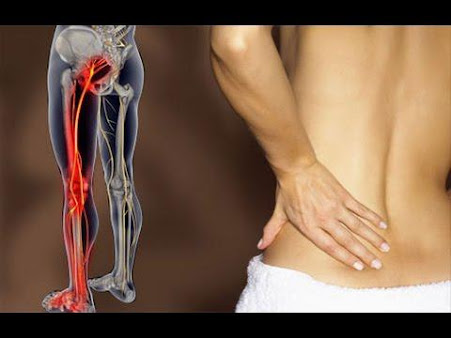
Lumbago (Lower Back Pain) – Symptoms and Treatment
What is Lumbago?
Lumbago is a general term for lower back pain. It can be caused by various conditions, including muscle strain, poor posture, herniated discs, arthritis, or other spinal issues.
Symptoms of Lumbago
Lumbago symptoms can range from mild to severe and may include:
- Pain in the Lower Back – Dull, aching, or sharp pain in the lumbar region.
- Stiffness – Difficulty moving or bending due to stiffness in the lower back.
- Muscle Spasms – Sudden and involuntary contractions of back muscles.
- Pain Radiating to Legs – In some cases, pain may extend to the buttocks or legs (sciatica).
- Numbness or Tingling – May occur if nerves are affected.
- Worsening Pain with Movement – Pain may increase with standing, sitting for long periods, or certain movements.
Treatment for Lumbago
Treatment depends on the cause and severity of the condition. Common approaches include:
1. Home Remedies
- Rest – Short-term rest (not prolonged bed rest) can help relieve pain.
- Cold and Heat Therapy – Apply ice packs for the first 48 hours, then switch to heat therapy.
- Gentle Exercises & Stretching – Light exercises such as walking, stretching, and yoga can help.
- Correct Posture – Maintain good posture while sitting and standing.
2. Medications
- Pain Relievers – Over-the-counter (OTC) painkillers like ibuprofen or acetaminophen.
- Muscle Relaxants – Prescribed in case of muscle spasms.
- Topical Creams – Pain relief gels and ointments for localized pain relief.
3. Physical Therapy
- Strengthening exercises for core muscles.
- Stretching routines to improve flexibility.
- Posture correction techniques.
4. Medical Treatments
- Injections – Corticosteroid injections for inflammation relief.
- Chiropractic Care – Spinal adjustments by a chiropractor.
- Acupuncture – Some find relief through acupuncture therapy.
5. Surgery (Rare Cases)
Surgery may be required for severe cases, such as herniated discs or spinal stenosis.
Prevention Tips
- Maintain an active lifestyle with regular exercise.
- Use ergonomic furniture and maintain good posture.
- Avoid heavy lifting or use proper techniques.
- Maintain a healthy weight to reduce stress on the lower back.
If symptoms persist or worsen, consult a doctor for a proper diagnosis and treatment plan.
Discover how doctors can help you stay youthful and healthy! Unveil the secrets to glowing skin and a vibrant life. Click now to learn more!
Pages
Translate
-
Manual Therapy : A Comprehensive Explanation What is Manual Therapy? Manual therapy is a specialized hands-on treatment used by physical...
-
Electrotherapy: A Complete Explanation What is Electrotherapy? Electrotherapy is a medical treatment that uses electrical stimulation to r...
-
How to Quickly Reduce Cholesterol Levels in the Blood High cholesterol increases the risk of heart disease and stroke, but the good news...
-
🔥 5 Ways to Beat Summer Weight Gain ☀️🏋️♂️ Summer is all about vacations, barbecues, and refreshing drinks—but it can also lead to we...
-
Lumbago (Lower Back Pain) – Symptoms and Treatment What is Lumbago? Lumbago is a general term for lower back pain. It can be caused by var...
-
Is Your Job Causing Your Back Pain? Back pain is one of the most common workplace injuries, affecting millions of workers worldwide. Whe...
-
5 Secrets to Perfect Skin – Full Explanation 🌿✨ Achieving flawless skin isn’t about spending a fortune on products—it’s about healthy ...
-
A Primer on Drug and Alcohol Assessments Introduction Drug and alcohol assessments are critical tools used to evaluate an individual’s subs...
-
Pediatric Physical Therapy: A Complete Explanation What is Pediatric Physical Therapy? Pediatric Physical Therapy (PPT) is a specialized...
-
Abscess – Natural Remedies for Healing and Relief An abscess is a swollen, pus-filled infection caused by bacteria. It can develop any...
Doctor Helpss. Powered by Blogger.
About Me
Contact Form
Blog Archive
-
▼
2016
(63)
-
▼
July
(24)
- A Primer on Drug and Alcohol Assessments
- Alcoholism and Drug Addiction – How to Prevent?
- Vaporizing for Smoking Cessation
- Lumbago (Lower Back Pain)
- Anemia during pregnancy - danger, the reasons of o...
- Three Athletic Injuries and the Sports Medicine Te...
- Common Sports Injuries That Even Non-Athletes Get
- Following Athletes for Fitness: How It Can Inspire...
- Will an Inversion Table Help Me? Causes, Symptoms,...
- Coping With Chronic Pain: The Willingness to Risk
- Joint Pains? Eat Crushed Eggshells for Stronger Bo...
- Is Your Job Causing Your Back Pain? Causes, Soluti...
- How to Quickly Reduce Cholesterol Levels in the Blood
- 7 Treatments for Shin Splints
- 5 Best Workouts To Get Rid Of Belly Fat
- Exposure to Mechanical Factors and Their Impact on...
- Causes and Treatment Options for Varicose Veins – ...
- Venous Ulcers – Immediate Treatment, Causes, Sympt...
- Essential Oils for Beautiful Skin
- Abscess – Natural Remedies for Healing & Pain Relief
- 5 Secrets to Perfect Skin – Achieve Clear, Glowing...
- 9 Effective Ways to Relax and Get a Restful Sleep
- Strange Dreams – 20 Fascinating Facts About Dreams...
- The Youngest Mother in History – The Shocking Stor...
-
▼
July
(24)
Copyright ©
Doctor Helpss | Powered by Doctorhelpss
Design by NewWpThemes | Blogger Theme by Lasantha - PremiumBloggerTemplates.com | Hip Hop Beats For Sale

















0 comments:
Post a Comment